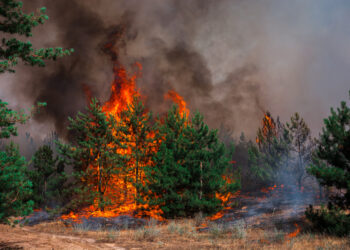The importance of public investment in housing
By Daniel Bierschwale EBS COLUMNIST
Big Sky is our home—a place with thousands of acres of skiable terrain, nearly 40 miles of trails, and endless fly-fishing opportunities making it a paradise for outdoor enthusiasts. It’s where neighbors gather for community events, to support local businesses, and to celebrate the adventures and connections that define our life here in Montana.
But let’s face it: living here is becoming harder for too many of us. The locals who keep this place running, who make it a community, are struggling to stay. Housing costs have skyrocketed, and it’s driving our families and friends away. According to the Big Sky Community Housing Trust, the average home price in Big Sky has surged past $2 million, far outpacing what local workers can afford. Rental prices have also skyrocketed, with median rents increasing by nearly 40% over the past five years, making it increasingly difficult for the workforce to remain in the area. Big Sky needs 1,354 additional homes by 2028 to meet the growing demand and ensure local workers have stable housing options.
Right now, about 80% of our workforce commutes to Big Sky. Those who teach our kids, care for us when we’re sick, and make our local economy run are driving in from far away. It’s not just an inconvenience for them; it’s a strain on our infrastructure and our sense of community. We’re seeing fewer families staying here, and school enrollment is declining in part because families can’t afford homes. We’ve made strides with housing trust programs like Good Deeds, Rent Local, MeadowView and RiverView, but it’s not enough—we need larger-scale solutions to ensure housing affordability for local workers.
Minneapolis provides a powerful example of how strategic public investment in housing can curb rent inflation and stabilize communities. The city implemented a series of housing policies under the Minneapolis 2040 plan, which aimed to increase density, expand affordable housing options and eliminate single-family zoning restrictions. This comprehensive approach helped slow rent growth since 2017 to just 1%, compared to the national average increase of 31%.
The plan focused on increasing the supply of multi-family units, leveraging public-private partnerships, and utilizing inclusionary zoning policies to require new developments to include affordable units. Since 2018, the City of Minneapolis invested more than $360 million into affordable rental housing and homeownership programs. By expanding the supply of affordable housing and implementing measures to keep rents in check, Minneapolis has demonstrated that proactive housing policies can create lasting benefits for residents.
However, mountain towns like Big Sky have unique challenges—limited land availability, a high volume of second-home buyers, and extreme desirability that drives up real estate prices. According to the Northwest Colorado Council of Governments, the price of a single-family home in Breckenridge, Colorado, has increased by 300% in the past two decades, demonstrating that without substantial intervention by local governments, affordability remains out of reach in resort communities. Unlike urban areas, mountain towns cannot simply increase density at the same scale due to environmental constraints and land-use limitations.
The only way to make affordable housing a reality in Big Sky is through public investment. Ensuring that our workforce can afford to live where they work is critical to maintaining a stable local economy and a thriving community. Investing in housing isn’t about giving a handout—it’s about joining hands to support one another and preserve the fabric of Big Sky.
Our community is actively working to address these challenges. A bill currently in the Montana legislature seeks to include workforce housing in the definition of the 1% for infrastructure resort tax, which would allow public dollars to be used for housing solutions. Additionally, Big Sky residents will vote this May on a ballot measure to determine whether public funds should be allocated to support Cold Smoke, a proposed local housing neighborhood. This represents a pivotal moment where we can decide to take meaningful action toward addressing our housing crisis, or if we choose to maintain the status quo.
In May, your vote will be your voice.
Daniel Bierschwale is the Executive Director of the Big Sky Resort Area District (BSRAD). As a dedicated public servant, he is committed to increasing civic engagement and voter education. Many ballot issues impact government services and public funding including subsequent property tax impacts. BSRAD is the local government agency that administers Resort Tax, which offsets property taxes while also funding numerous community-wide nonprofit programs.













